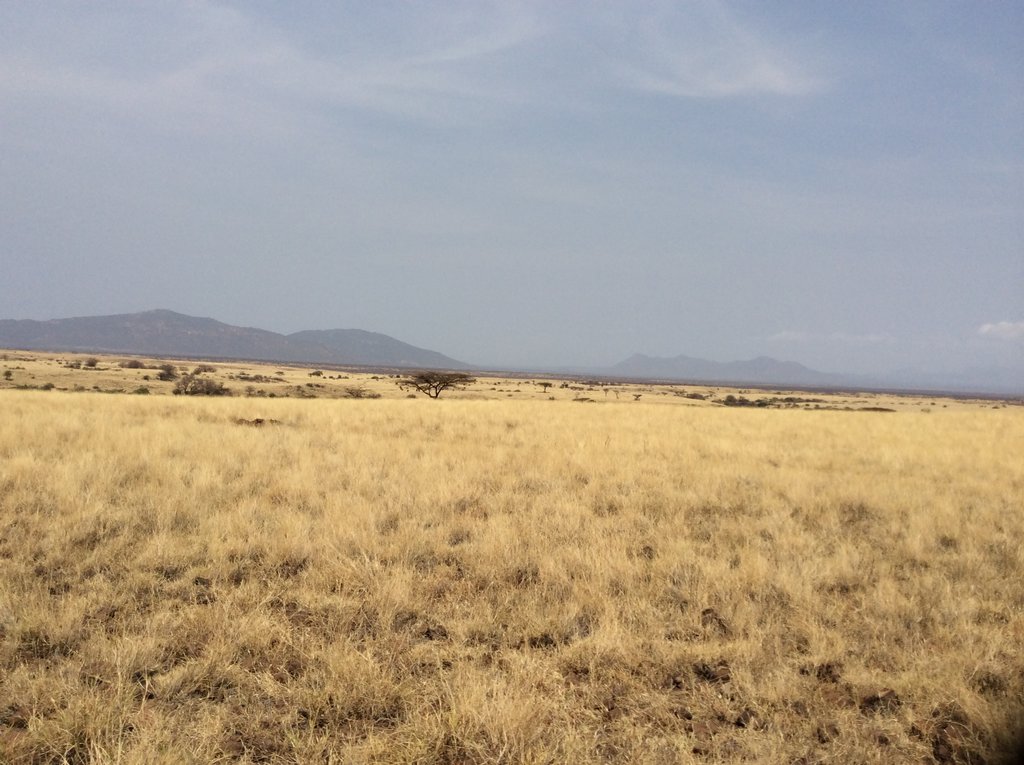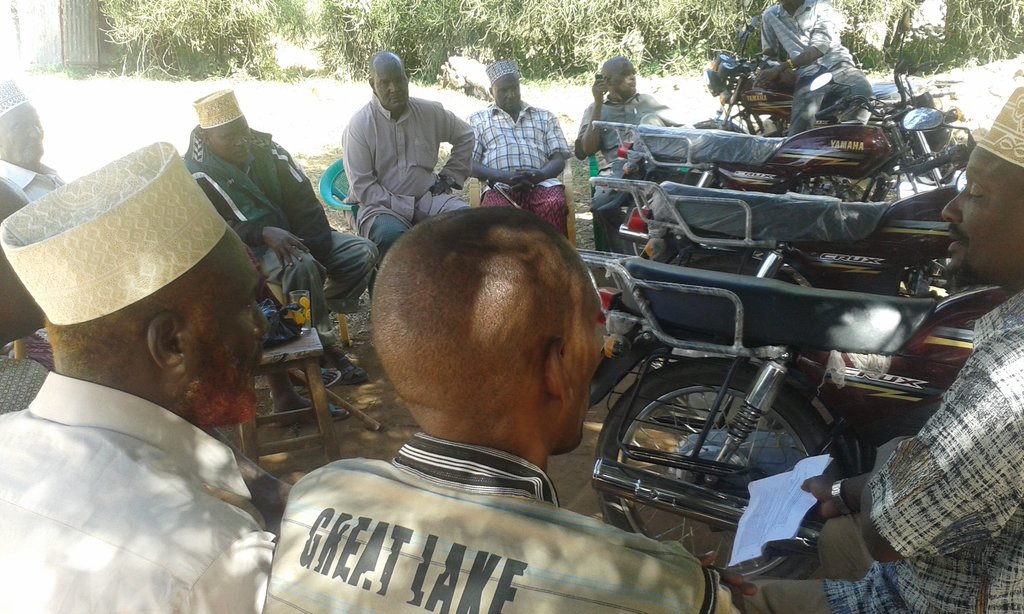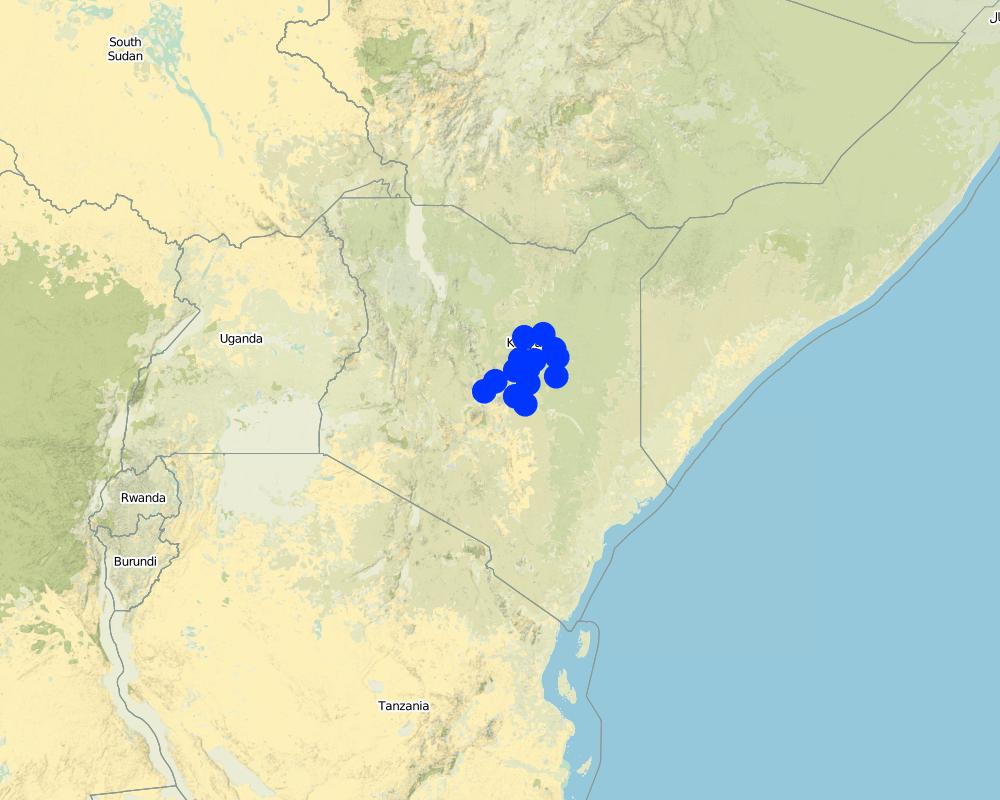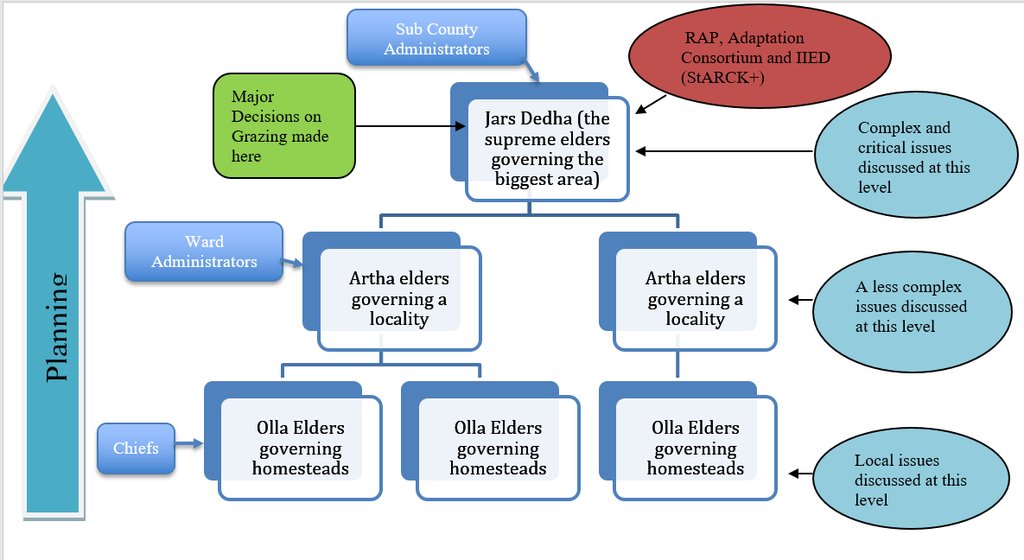Empowering Dedha institutions in governing the natural resources of Isiolo rangelands [肯尼亚]
- 创建:
- 更新:
- 编制者: IBRAHIM JARSO
- 编辑者: Caroline King-Okumu
- 审查者: Rima Mekdaschi Studer, Donia Mühlematter
Jars Dedha
approaches_3345 - 肯尼亚
- Empowering Dedha institutions in governing the natural resources of Isiolo rangelands: May 13, 2018 (inactive)
- Empowering Dedha institutions in governing the natural resources of Isiolo rangelands: July 31, 2018 (inactive)
- Empowering Dedha institutions in governing the natural resources of Isiolo rangelands: Sept. 3, 2018 (inactive)
- Empowering Dedha institutions in governing the natural resources of Isiolo rangelands: Nov. 2, 2021 (public)
查看章节
全部展开 全部收起1. 一般信息
1.2 参与方法评估和文件编制的资源人员和机构的联系方式
土地使用者:
Boru Edin
+254 715 627 545
Kinna Dedha Elders
Kinna town, Kinna Ward, Isiolo County.
肯尼亚
Non-State Actor:
Jama Abdiaziz
+254 707 720 577
aziz2012ke@gmail.com
Pastoralist Capacity Development Programme (PACDEP)
Isiolo Town, Kenya
肯尼亚
土地使用者:
Diba Rukia
+254 728 643 044
Ward Adaptation Planning Committee
Kinna, Isiolo County
肯尼亚
SLM专业人员:
有助于对方法进行记录/评估的项目名称(如相关)
Strengthening Adaptation and Resilience to Climate Change in Kenya Plus (StARCK+)有助于对方法进行记录/评估的机构名称(如相关)
Resource Advocacy Programme (RAP) - 肯尼亚1.3 关于使用通过WOCAT记录的数据的条件
(现场)数据是什么时候汇编的?:
03/11/2017
编制者和关键资源人员接受有关使用通过WOCAT记录数据的条件。:
是
2. SLM方法的描述
2.1 该方法的简要说明
This approach – driven by communities and supported by various agencies - aims to revive and strengthen the traditional natural resource management institutions of Boran pastoralists in Northern Kenya. The traditional system, which was devised by the Boran pastoral community and honed over centuries to suit the challenges of the rangelands, has been steadily eroded by external factors and formalised systems after the emergence of the nation-state.
2.2 该方法的详细说明
该方法的详细说明:
Pastoral Community Members together with the Jarsa Dedha (the council of elders who control the use of grazing land and its resources) are at the forefront of reinvigorating traditions of rangeland management. To achieve this, they have been supported by organizations including the Ward Adaptation Planning Committees (WAPC), the Resource Advocacy Programme (RAP) and the International Institute for Environment and Development (IIED). There has been a focus on reviving traditional institutions and systems of managing of natural resources to help communities adapt to climate change.
One specific project that has assisted the re-empowerment of the Dedha institutions was StARCK+ (funded by DfID). StARCK+ was founded on an understanding and an appreciation of the traditional natural resource governance of the Boran pastoral community. Responding to participatory demand it undertook to help strengthen this customary natural resource management system. Various agencies have also conducted research on the traditional institution and investigated how it could be improved. These include IIED, (UK), the University of Nairobi, (Kenya) and the University of Sussex (UK).
The Jarsa Dedha is an indigenous institution, through which customary laws and provisions guide the management of natural resources. The Boran of Isiolo County, Kenya, like their kin in southern Ethiopia, derive their customary laws from an overall supreme general assembly called the Gadha. The Gadha governing council preserves traditional laws and codes of conduct, as well as issuing amendments and additions based on the evolving environmental, social and cultural context. The Gadha system has a set of laws and provisions (seere), customs and culture (aada), and norms and values that govern society.
The recognition and observance of seere and aada are still considered vital for the wellbeing of the community, and the Gadha Council remains a legitimate institution in the eyes of Borana society. However, adherence to these laws is declining and the power of Borana customary institutions to enforce regulations is being undermined in a number of ways.
The reasons for weakening traditional institutions are basically poor recognition by the county and national government, and non-compliance with the rules due to changing socio-cultural norms. The council of elders that govern grazing resources, the Jarsa Dedha, which is the custodian of these unwritten rules and regulations locally, no longer has sufficient capacity or authority to enforce them as it had done prior to colonial rule. With climate change, pasture and water supplies are becoming scarcer and there is no other better way to govern land than the traditional system: that is why reviving, strengthening and improving the system was much welcomed through the advent of the StARCK+ project and the initiatives and support that have followed.
Looking towards the future, the rules of governing natural resources have been collected and formed into a draft county customary natural resource governance bill. This, if passed by the County Assembly, would represent a very significant step, by legitimising the traditional system of rangeland management through the Jarsa Dedha.
2.3 该方法的照片
2.4 该方法的视频
注释、简短说明:
The video clearly defines the technology and the approach
日期:
20/02/2015
位置:
Garbatulla Area
摄影师的名字:
Hilda Kathure
2.5 采用该方法的国家/地区/地点
国家:
肯尼亚
区域/州/省:
Isiolo
有关地点的进一步说明:
Pastoral areas of Isiolo
Map
×2.6 该方法的开始和终止日期
注明开始年份:
2012
若不知道准确的年份,请注明该方法的大致开始日期。:
不到10年前(最近)
注释:
The project started 2012 and ended 2016 but the approach is still continuing
2.7 方法的类型
- 传统/本土
2.8 该方法的主要目的/目标
The Approach is aimed at strenghthening and re-empowering the traditional institutions that govern rangeland management in the rangelands of Isiolo, in order to improve utilisation of natural resources and build community resilience to droughts and future environmental changes.
2.9 推动或妨碍实施本办法所适用的技术的条件
社会/文化/宗教规范和价值观
- 启动
The approach was traditional and embedded in the culture of boran pastoralists and therefore easy to implement.
- 阻碍
The commercialization of livestock and its production like milk has made it difficult for elders to implement the approach.
财务资源和服务的可用性/可得性
- 启动
Communities make their own contributions to support implementation of the approach.
- 阻碍
No specific budget assigned by government authority for this approach: some funds from projects and county government and contributions from the pastoralists themselves.
机构设置
- 启动
Well elaborated organizational design at all levels of institutional scale.
- 阻碍
Collision between the mandates of traditional structure and formal structure. This was addressed through accepting Chiefs as ex-official members in the Dedha council of elders.
参与者的的协作/协调
- 启动
Many NGOs and local organization support the implementation of the approach through providing means for surveillance such as vehicles or motorbikes. NGOs frequently also support Dedha assemblies that involve meetings of people from far away.
- 阻碍
Government and some NGOs sometimes establish parallel grazing committees.
法律框架(土地使用权、土地和水使用权)
- 启动
Traditional tenure system.
- 阻碍
No legal papers for the ownership.
政策
- 启动
Traditional provisions and rules known by all community members.
- 阻碍
Traditional rules not known to everyone.
土地治理(决策、实施和执行)
- 启动
Elders make key decisions on governance of land.
- 阻碍
Women and youth not well involved in decision making although changes are happening nowadays to include them.
了解SLM,获得技术支持
- 启动
Traditional skills much used.
- 阻碍
Little technical support.
市场(购买投入,销售产品)和价格
- 启动
Ensures security and market thrives.
- 阻碍
The approach is more social and not market oriented.
工作量、人力资源可用性
- 启动
Youth provide man power Voluntarily.
- 阻碍
Volunteers sometimes don’t come out for work.
3. 相关利益相关者的参与和角色
3.1 该方法涉及的利益相关者及其职责
- 当地土地使用者/当地社区
Boran Community members, Dedha elders.
Agree on the pasture and water management approach and implement .
- 社区组织
Ward Adaptation Planning Committees.
Implement community plans and fundraise for it.
- NGO
Resource Advocacy Programme (RAP), Merti Integrated Development Programme (MIDP), Pastoralist A Capacity Development E Programme (PACDEP), International Institute for Environment Development and Adaptation Consortium (ADA)
Support communities in implementing the approach.
Ward Adaptation Planning Committees; Implement community plans and fundraise for it.
如果涉及多个利益相关者,请注明领导机构:
WAPC , ADA and IIED
3.2 当地土地使用者/当地社区参与该方法的不同阶段
| 当地土地使用者/当地社区的参与 | 指定参与人员并描述活动 | |
|---|---|---|
| 启动/动机 | 互动 | Pastoral Community Members, Dedha elders and supporting organizations like WAPC, RAP, IIED and DfID supported the process of reviving the traditional system of management of natural resources to help communities adapt to climate change. |
| 计划 | 互动 | Pastoral Community Members and Dedha Elders to improve their systems of management of land and land-based resources. |
| 实施 | 互动 | Dedha elders as they are tasked with ensuring that the natural resource governance system is successful. |
| 监测/评估 | 互动 | Pastoralists and elders to keep those tasked are properly undertaking the responsibilities. |
3.3 流程图(如可用)
具体说明:
The Dedha traditional system of managing resources has internal hierarchy at different levels i.e. Olla (homestead), Artha (locality) and Dedha (a large area). Although planning and minor decisions are made at local levels, major and binding decisions are agreed at Dedha level on grazing and management of pasture. Many NGOs and government actors engage the management system at Dedha level.
作者:
Ibrahim Jarso
3.4 有关SLM技术选择的决策
具体说明谁有权决定选择要实施的技术:
- 所有相关参与者,作为参与式方法的一部分
解释:
The Participatory process is very essential in making the governance system work for pastoralists.
明确做出决策的依据:
- 个人经验和意见(无记录)
4. 技术支持、能力建设和知识管理
4.1 能力建设/培训
是否为土地使用者/其他利益相关者提供培训?:
是
明确受训人员:
- 土地使用者
如果相关,请说明性别、年龄、地位、种族等。:
Largely elders but women and youth are also represented in the training.
培训形式:
- 在职
- 农民对农民
- 公开会议
涵盖的主题:
Constitutional clauses supporting management of land through traditional institutions.
Need to legislate the local traditional rules to county laws. Participatory mapping of Natural Resources in the grazing areas to improve planning.
注释:
Community members really participated in the processes and trainings and understood the contemporary issues.
4.2 咨询服务
土地使用者有权使用咨询服务吗?:
是
指明是否提供了咨询服务:
- 在固定中心
说明/注释:
The pastoralist extension training sessions take place in Agricultural Training Centre in Isiolo Town. They are normally conducted once or twice a year because of financial constraints.
4.3 机构强化(组织发展)
是否通过这种方法建立或加强了机构?:
- 是,非常
具体说明机构的强化或建立程度:
- 本地
说明机构、角色和职责、成员等。:
The Dedha institution has been strengthened as they were enabled to undertake their responsibilities better.
具体说明支持类型:
- 设备
- Their meetings were supported and made frequent and increased reach.
提供进一步细节:
Provided with materials like motorbikes.
4.4 监测和评估
监测和评估是该方法的一部分吗?:
是
注释:
This is a traditional approach and it is effectively self-monitored for learning and improvement.
若是,该文件是否用于监测和评估?:
是
4.5 研究
研究是该方法的一部分吗?
是
明确话题:
- 社会学
- 经济/市场营销
- 生态学
- 技术
提供进一步的细节,并指出是谁做的研究:
Various institutions have conducted research on the traditional institution and investigated how it could be improved through strengthening and reviving it with new initiatives for improved governance of natural resources. The institutions are the International Institute for Environment and Development, (UK), the University of Nairobi, (Kenya) and the University of Sussex (UK).
5. 融资和外部物质支持
5.1 该方法中SLM组成部分的年度预算
注释(例如主要的资助来源/主要捐助者):
The traditional system is self sustaining and thrives through local contributions but no specific budget lines.
5.2 为土地使用者提供财政/物质支援
土地使用者是否获得实施该技术的财政/物质支持?:
否
5.3 对特定投入的补贴(包括劳动力)
- 无
如果土地使用者的劳动力是一项重要的投入,那么是不是:
- 自愿
注释:
The land users are pastoralists and surveillance of grazing reserves were undertaken to protect their pastures from irregular access. Dedha elders oversee the surveillance and health of rangelands.
5.4 信用
是否根据SLM活动的方法给予信用值?:
否
5.5 其它激励或手段
是否有其他激励措施或工具用于促进SLM技术的实施?:
是
如果是,请具体说明:
The rules of governing natural resources were collected and documented into a county customary natural resource governance bill.
6. 影响分析和结论性陈述
6.1 方法的影响
该方法是否有助于当地土地使用者,提高利益相关者的参与度?:
- 否
- 是,很少
- 是,中等
- 是,支持力度很大
Strengthens community rights and ownership of their land.
这种方法是否有助于基于证据的决策?:
- 否
- 是,很少
- 是,中等
- 是,支持力度很大
The Approach convened the community and identified the community challenges and worked on it with the support of Dedha elders.
该方法是否帮助土地使用者实施和维护SLM技术?:
- 否
- 是,很少
- 是,中等
- 是,支持力度很大
Supported the essential activities of the traditional system and made it easy to implement.
该方法是否提高了SLM的协调性和成本效益?:
- 否
- 是,很少
- 是,中等
- 是,支持力度很大
Improved coordination among the partners and made implementation easy.
Beside getting support from County climate adaptation program through the Ward Adaptation Planning Committee, the approach also got support from Water Sector Trust Fund.
该方法是否提高了土地使用者实施土地管理的知识和能力?:
- 否
- 是,很少
- 是,中等
- 是,支持力度很大
The knowledge is culturally passed to generations
该方法是否提高了其他利益相关者的知识和能力?:
- 否
- 是,很少
- 是,中等
- 是,支持力度很大
Yes, other stakeholders’ knowledge on the system was also improved.
该方法是否建立/加强了机构、利益相关者之间的合作?:
- 否
- 是,很少
- 是,中等
- 是,支持力度很大
Yes, the Approach made local indigenous institution stronger and enhanced their collaboration.
该方法是否缓解了冲突?:
- 否
- 是,很少
- 是,中等
- 是,支持力度很大
It provided platform for resource based conflict discussions and also settled many of local and trans-boundary conflicts through the empowered Dedha elders
该方法是否有助于社会和经济弱势群体?:
- 否
- 是,很少
- 是,中等
- 是,支持力度很大
Yes, the approached saved livestock from death in times of drought and built pastoral communities economically.
该方法是否改善了性别平等并赋予女性权力?:
- 否
- 是,很少
- 是,中等
- 是,支持力度很大
The aAproach engaged the Dedha elders to accept women in their traditional institutions and entrenched gender in establishment of WAPCs
该方法是否鼓励年轻人/下一代土地使用者参与SLM?:
- 否
- 是,很少
- 是,中等
- 是,支持力度很大
Many youth were involved in implementing the Traditional systems of governance as a result of the approach
该方法是否改善了阻碍SLM技术实施的土地使用权/用户权问题?:
- 否
- 是,很少
- 是,中等
- 是,支持力度很大
Yes, the Approach led to formulation of customary natural resource management bill meant to enhance land rights.
该方法是否改善了粮食安全/改善了营养?:
- 否
- 是,很少
- 是,中等
- 是,支持力度很大
Yes, through ensuring retention of livestock asset.
该方法是否改善了市场准入?:
- 否
- 是,很少
- 是,中等
- 是,支持力度很大
The Approach through improvement of range management institution of Dedha, has helped to ensure there is food for pastoral herds and livestock with good body conditions were sold in local markets in good prices
该方法是否改善了供水和卫生条件?:
- 否
- 是,很少
- 是,中等
- 是,支持力度很大
Yes, through the approach many water facilities were better managed.
该方法是否提高了土地使用者适应气候变化/极端情况和减轻气候相关灾害的能力?:
- 否
- 是,很少
- 是,中等
- 是,支持力度很大
Yes, the Approach empowered the community to arrange their pattern of grazing to wet, dry season and grazing reserves to cope with climate extremes and disasters.
该方法是否会带来就业、收入机会?:
- 否
- 是,很少
- 是,中等
- 是,支持力度很大
Yes, many job opportunities were created for locals and also private businesses.
6.2 土地使用者实施SLM的主要动机
- 增加生产
The livestock was calving and reproducing very fast leading to increased production as a result of good management of land.
- 增加利润(能力),提高成本效益比
With minimal and voluntary inputs the pastoralists keep livestock in the range and make a lot of profit when they sell.
- 减少土地退化
The controlled grazing pattern led to regeneration of degraded rangelands and improved its ecosystem services.
- 降低灾害风险
With strengthened dedha elders the community were able to prepare very well to drought and other disasters.
- 减少工作量
Available pasture when needed reduced the challenges of mobility to far areas and excess workload.
- 声望、社会压力/社会凝聚
The approach enhances local prestige and also reduces the incidences of conflict in tough times enhancing social cohesion.
- 环境意识
The approach allows regeneration of natural vegetation as pastoralists preserve pasture in one grazing area as they grazing in the other.
- 习俗和信仰,道德
The approach uses traditional etiquettes which enhances customs and beliefs.
- 提高SLM知识和技能
The approach allows young people to learn and attain new knowledge on proper governance of natural resources as well the elders attain new contemporary skills to manage land.
- 美学改进
The preserved grazing areas allows pasture to blossom and very beautiful to the eye as ecosystems regenerates and gets in to new life.
- 冲突缓解
The approach reduces incidences of conflict as the use and stewardship of pasture and water is clearly defined.
6.3 方法活动的可持续性
土地使用者能否维持通过该方法实施的措施(无外部支持的情况下)?:
- 是
若是,请说明如何维持:
The traditional system of managing natural resources for pastoralists has been in place for time immemorial and it supports their way of life and even if there is minimal support from outside, such as the empowering approach, the SLM will still continue as it was developed by Boran pastoralists – who feel it is the most legitimate and appropriate system of governing rangelands in the region. This has been confirmed by many analytical studies of the system.
6.4 该方法的长处/优点
| 土地使用者眼中的长处/优势/机会 |
|---|
| It is inherent approach that will pass to the next generation of pastoralists with the new innovations that are incorporated over the years. |
| It is the cheapest and easiest way of managing the rangelands for posterity. |
| It is a very flexible approach that's accepting new changes so that the technology is conversant at all times. |
| 编制者或其他关键资源人员认为的长处/优势/机会 |
|---|
| It is a legitimate system recognized by all pastoralist for management of their rangeland resources. |
| It is conservative and less costly to implement in the vast rangelands with little incentives. |
6.5 该方法的弱点/缺点以及克服它们的方法
| 土地使用者认为的弱点/缺点/风险 | 如何克服它们? |
|---|---|
| There is no law protecting it. | The government need to establish a law that recognizes and protects the approach. |
| The changing social norms with globalization and diversification of livelihood is pausing a challenge like Commercial Pastoralism | Government need to establish policies and plans as well as legislations that recognizes the traditional systems and institution for the approach to be successful for long |
| 编制者或其他关键资源人员认为的弱点/缺点/风险 | 如何克服它们? |
|---|---|
| There are many competing claims over rangeland resources and government supports some. | Create awareness of local leaders about the competing claims and lobby them to protect rangeland resources. |
7. 参考和链接
7.1 方法/信息来源
- 实地考察、实地调查
2 visits
- 与土地使用者的访谈
6 interviews
- 根据报告和其他现有文档进行编译
2
7.2 参考可用出版物
标题、作者、年份、ISBN:
Evolving pastoralists institutions by patison and tari
可以从哪里获得?成本如何?
IIED Website
7.3 链接到网络上可用的相关信息
标题/说明:
Evolving customary institutions by patison and tari
URL:
pubs.iied.org/pdfs/10076IIED.pdf
标题/说明:
Strengthening Customary institutions the case of Isiolo County Northern Kenya by Caroline, Tari and Jarso
URL:
www.celep.info/wp-content/uploads/2015/11/Strengthening-local-institutions.pdf
标题/说明:
Investing in institutional ‘software’ to build climate resilience
URL:
https://anglejournal.com/article/2015-06-investing-in-institutional-software-to-build-climate-resilience/
标题/说明:
Inclusive green growth in Kenya: Opportunities in the dryland water and rangeland sectors
URL:
http://pubs.iied.org/10137IIED/
标题/说明:
Vegetation resources and their economic importance in Isiolo County, Kenya
URL:
http://pubs.iied.org/10141IIED/
链接和模块
全部展开 全部收起链接
无链接
模块
无模块







